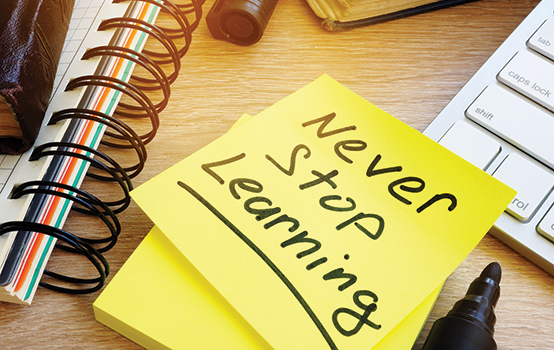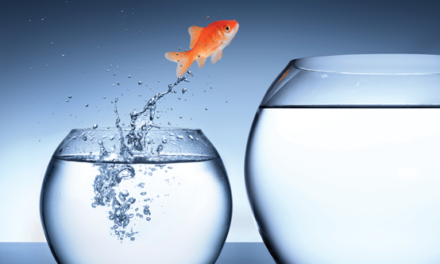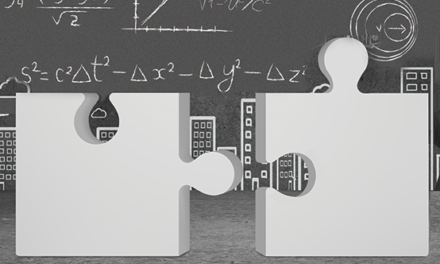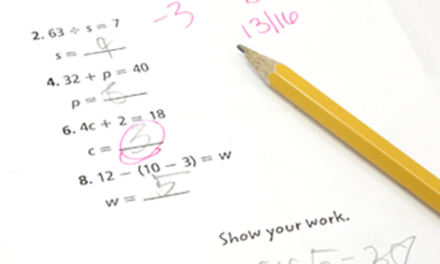Research into the development of expertise shows how teachers can develop their talent throughout their careers.
The disheartening myth that teachers peak as professionals early in their careers and then hit a performance plateau originated from a handful of studies (e.g., Boyd et al., 2008; Kane, Rockoff & Staiger, 2008) and has become a sort of conventional wisdom — one that, if taken at face value, suggests teaching is, at best, a trade that can be grasped quickly. If that were the reality, then the best way to manage such a labor pool would be to hire people with the right background, train them up quickly, and remove those who do not meet a minimum bar of proficiency. Schools and districts would not need to invest much time, money, or attention into teachers’ continual professional development and growth.
As it turns out, though, newer and more sophisticated studies challenge both the validity and accuracy of this conventional wisdom and reveal a major shortcoming in the earlier studies: They failed to track individual teachers over time and instead assessed the average performance of large cohorts of teachers based on their years of service. As school systems have developed richer data sets that follow the same teachers over time, a clearer and more positive picture of their performance trajectories has emerged. It shows that teacher performance does improve dramatically during their first few years on the job and continues to improve in subsequent years, albeit less dramatically (Harris & Sass, 2011; Papay & Kraft, 2015). Like fine wines, teachers generally appear to keep getting better with time. That’s good news.
A review of 30 studies published in the past 15 years (Kini & Podolsky, 2016) further debunks the conventional wisdom, finding that as teachers gain more experience, they are generally and increasingly more effective. Further, their effectiveness as teachers grows at a greater rate if they are working in a supportive school environment. That’s even better news.
This positive news, however, is nuanced: Not all teachers get better. Improvements in average teacher performance mask “substantial heterogeneity” in these data (Papay & Kraft, 2015, p. 118). That is, while most teachers keep honing and polishing their craft the longer they stay in the classroom, a fair number do not. So, the real question is, what separates these groups of teachers? What steps do continuous improvers take to advance their teaching practices that flatliners appear to sidestep?
According to the conventional wisdom of human capital management systems, the answer might seem obvious: Innately talented teachers are the most likely to improve over time. They tend to move up the career ladder, or get a master’s degree, or learn about and apply new research to the classroom . . . In other words, people who are naturally talented are more likely than other people to get better. But step back a moment to consider what we mean by talent. If we assume it to be an innate or fixed trait, then the goal of a capital management system is to identify and promote naturally talented people. However, the bulk of the research findings in this area suggest otherwise: In most cases, talent is developed.
Over dozens of years, researchers have studied thousands of people as they become expert in a given endeavor, from athletics to the arts to other professional undertakings. Across this broad swath of fields — and there’s no reason to think that teaching is an outlier — they’ve identified some consistent patterns, or phases, of talent development. For instance, a few decades ago, Benjamin Bloom (1985) led a team of researchers at the University of Chicago in a study of 120 concert pianists, sculptors, Olympic swimmers, world-class tennis players, research mathematicians, and neurologists that sought to figure out how these experts had developed their talents. Specifically, the researchers sought to map the journey of these experts — the steps and milestones they took and experienced along the way. As it turns out, the narratives of how these people developed their diverse talents were remarkably consistent and provided a sort of cartography for talent development.
Falling in love with your field
Talented individuals often described their early years as a time of exploration and joy as they learned the fundamentals of the field — whether it was hitting a tennis backstroke, playing simple songs on the piano, or making flip turns at a neighborhood swimming pool. Building on the earlier work of Alfred North Whitehead (1929), Bloom labeled this the “romance” phase. During this romance phase, the experts recalled having positive experiences with warm, nurturing teachers and coaches, who instilled passion in them and helped them to fall in love with their field.
Teachers are no different. Early on, they need plenty of positive experiences to help them develop a passion for teaching and learning. These experiences often come when they are students themselves. Perhaps a dynamic teacher inspires or encourages them to enter the profession, or they fall in love with a particular content area. Their initial forays into the classroom may spark a true passion for teaching, especially when they see light bulbs going on above students’ heads.
Talented individuals often described their early years as a time of exploration and joy as they learned the fundamentals of the field.
During this initial phase of development — likely during preservice preparation and through their first one or two years in a classroom — teachers benefit most from the tutelage of a nurturing, supportive mentor who makes them want to commit to honing their abilities. For teachers, this often means “falling in love” with the profession, seeing it as something they could spend a lifetime doing.
Imitating the experts and automating the fundamentals
These positive early experiences are important because the next phase of the journey toward expertise requires a period of nose-to-the-grindstone, focused effort. It’s a time of digging in with disciplined training — moving beyond the fundamentals and developing and solidifying routines so they become automatic.
This phase of the journey often requires a good deal of imitation (Coyle, 2009) — copying the works of the Dutch masters, observing and trying to replicate Serena Williams’ forehand, or imitating Walter Gieseking’s rendition of “Clair de Lune.” Because this phase takes hard work and lots of repetition, it characteristically isn’t much fun. However, those who have already bought in to the field by falling in love with it in the previous phase don’t begrudge the hours of practice. They’re keen to get better and seek feedback to help them progress.
Consider teaching. At first, teachers have many skills to master: writing lesson plans, delivering feedback on student work, keeping a grade book, managing classroom discussions — the list goes on and on. When teachers first develop these skills, they consume most of their mental bandwidth. Over time, though, they get easier as teachers begin to internalize the natural flow of lessons. They intuitively sense the right pace of learning, become adept at checking for understanding, develop a classroom persona, and learn to redirect disruptive students to more productive behaviors. When this happens, usually after a few years in the profession, things begin to feel easier.
Yet, at some point during this phase, many people stop improving. Further honing our skills requires continued mental effort, or what Nobel Prize–winning cognitive scientist Daniel Kahneman (2011) refers to as “cognitive strain” (p. 59). The trouble is that our brains are most “comfortable in low-effort mode” (p. 24). Developing expertise, though, requires us to continually resist our brain’s urge to revert back to low-effort mode.
Forging ahead with conscious incompetence
Moving beyond the point of imitation and avoiding slipping into low-effort mode requires a whole new phase of learning. This phase is sometimes described as a period of “conscious incompetence” (Howell, 1982), when we know what we don’t know and thus engage in what Anders Ericsson and colleagues (Ericsson, Krampe, & Tesch-Römer, 1993) described as “deliberate practice” — reflecting on our current learning and searching for new methods and knowledge to stretch ourselves.
Keeping our brains amped up to high-effort mode and teaching ourselves new techniques is difficult to do — yet it’s what separates experts from amateurs.
If we want to play lead guitar, for example, we must go beyond simply strumming and learn how to pluck individual strings. If we want to display our artwork in a gallery, we must move beyond painting inanimate fruit and learn how to capture the motion of ocean waves. In short, just as we start feeling competent with what we’re doing, we need to start anew, burdening ourselves with the cognitive load of mastering additional and increasingly complex techniques. Keeping our brains amped up to high-effort mode and teaching ourselves new techniques is difficult to do — yet it’s what separates experts from amateurs.
If we want to strengthen teachers, wisdom says we ought to provide them with opportunities to focus their creative talents and support them in applying their skills in different ways.
Developing multiple mental models
Moving beyond competence to expertise also requires us to redirect our mental energies to the world beyond our own minds and bodies. For example, once we’ve mastered dribbling a basketball, we must begin to consider what other basketball players on the court are likely to do. And once we learn to play a song on the piano without missing a note, we must begin to consider how to play it with style and feeling to better connect with listeners.
What begins to set experts apart is their ability to view themselves from an outsider’s perspective by engaging in mental slow-motion replays and self-critiques of their performances. Doing so ultimately leads people to develop another key component of expertise — the ability to use multiple “mental models.” We test and retest hypotheses by asking ourselves, What went right and what went wrong? And through this process of ongoing reflection, we become experts.
According to seminal research on expertise (Newell & Simon, 1972), experts continually develop and refine multiple “mental models” — with special emphasis on multiple. They don’t get stuck on a single interpretation of events (like the Far Side cartoon of an airline pilot looking out of his cockpit, spotting a mountain goat, and remarking to his copilot, “Say, what’s a mountain goat doing in a cloud bank?”). Rather, they continually draw upon a broad base of knowledge to check and recheck their assumptions.
For teachers, the process is much the same. When students struggle, expert teachers draw on a variety of mental models to diagnose the problem. Are students not yet reading with automaticity? Do they lack background knowledge? Or do they have a fixed mind-set about challenging content? Rather than concluding students cannot learn, expert teachers ask themselves, What can I do differently to help them learn? Schools and districts that nurture this kind of reflective thinking are getting past the restrictive box of conventional thinking and, instead, helping teachers become more expert practitioners.
Unleashing creativity
Having multiple mental models at our disposal creates a seedbed where creativity and innovation can sprout. It’s what allows jazz musicians to improvise: They’re still following the same chord progressions as the original tune, but they’re able to throw in extra notes, often spontaneously, because they’ve internalized another set of routines — jazz scales — and can listen for what sounds good. In this way, creativity often boils down to knowing the rules so well that we see when and how to break them. Painters such as Picasso or Monet created wildly inventive works of art by breaking contemporary conventions of perspective and detail.
Great teachers operate in a similar zone. They develop new and innovative ways to help students learn. Some “break the rules,” for example, by spurning traditional classroom practices in favor of independent learning or setting aside scripted learning from textbooks to help students consult primary sources and write their own accounts of historical events or to give them time to engage in rigorous, natural studies of local biomes. As teachers unleash their creativity, they often enable their students to do the same.
We see and admire these great teachers and often assume, incorrectly, that they’re just naturally talented. What we know about talent development, though, is that reaching this pinnacle of teaching ability requires a deep understanding of and appreciation for conventions — like standards and curricular expectations. It also requires expert mental models of pedagogy that aid in checking for student understanding and guiding their learning.
Supporting career-long growth through talent development
The U.S. is considered a global hotbed of creativity in other sectors, yet many years of top-down direction (under ideologically quite different presidents) have stifled innovation in U.S. schools, according to a 2014 analysis by the Organization for Economic Cooperation and Development. We believe it’s essential to move toward a career-long talent development system that supports teachers in developing expertise.
We believe people can learn and grow for an entire lifetime. And that includes educators.
What would such a system look like? We might start with a simple premise, the reason we engage in education in the first place: We believe people can learn and grow for an entire lifetime. And that includes educators. With that premise in mind, we would create a system that nurtures teachers’ talent at every stage. It might look like this:
- Stage 1: Ensure that people who enter the system demonstrate a passion for teaching.
More than just a passion for kids, or for Shakespeare, or for science, the emphasis needs to be on a passion for teaching. We need to look for people who are full of enthusiasm for teaching and have fallen in love with the profession — and make that a prerequisite for entering the field. Incidentally, this is exactly what is done in Finland, which has a much publicized high-performing education system. - Stage 2: Provide new teachers with models to follow.
Often, we throw new teachers into the deep end without a life preserver and ask them to swim. Instead, we need to provide teachers with models that illustrate what good teaching looks like and how students learn. And they need to know how to use these models based on their individual starting points. Decades of research, for example, show that providing teachers with a consistent instructional model, like Explicit Direct Instruction (which combines direct instruction with independent learning) is consistently one of the most powerful ways to improve student achievement (Hattie, 2008). When we consider the phases of talent development, it’s easy to see the value of providing new teachers with research-based models: They shorten teachers’ learning curves by letting them “copy” from master teachers. - Stage 3: Develop the expertise of midcareer teachers through reflection and peer coaching.
Models shorten the learning curve, but they usually don’t help teachers get muchsmarter about their profession. Moreover, even the best models or programs won’t work all the time for all the kids. So, we need teachers to become experts — smart professionals who can employ multiple mental models to diagnose and solve student learning challenges. We cannot force anyone to become an expert, nor can we cram expertise into someone’s brain. Rather, it’s something that develops over time through continuous learning and working with skilled peers. Bruce Joyce and Beverley Showers (2002) highlighted this long ago: Teachers only transfer new professional learning into their actual classroom practices when theory, modeling, and practice are combined with peer coaching. - Stage 4: Create opportunities for teachers to engage in self-directed learning.
Nowadays many people are espousing personalized, self-directed learning for students. We need to espouse the same thing for teachers. Instead of trying to equate teachers’ professional learning with checking boxes in an evaluation framework, a talent development system would unleash their potential by telling them that once they demonstrate they’ve mastered the district- or schoolwide instructional model (which research shows will move the needle significantly for student achievement; see, for example, Hattie, 2008), they can then guide their own professional learning. We can then provide them with road maps for doing so — areas where we know that improving practice will also improve learning — and then use a system of microcredentials to reward them with certifications for learning specific new skills and content. Unlike systems that dampen innovation and frustrate teachers, such a system would expand teachers’ creativity and nurture their passion for the profession.
Adopting these practices requires us to acknowledge that many of the “get tough” approaches to annual performance appraisals that have been in vogue over the last 10-20 years have backfired — not just in education but in business too. Microsoft, for example, learned the hard way that heavy-handed “rank-and-yank” approaches to performance development and appraisals led to a decade of stagnation. So, it pulled the plug on these approaches in favor of encouraging employees to set stretch goals and receive real-time feedback from supervisors to help them achieve those goals.
Does this mean we ought to scrap our current systems and frameworks for evaluating educators altogether? Not at all. Rather, we might need to look at them with a different perspective — namely, through the lens of developing talent, rather than by sorting and selecting so-called “human capital.” For more than a decade, we’ve built complex human capital systems (and formulas) to measure, track, and reward teacher performance. Yet we’ve applied too little of the science and psychology of talent development to our efforts, leaving open the critical question of how exactly these systems will move a teacher from point A to B along a talent trajectory.
In short, the actual process of teacher talent development has remained undervalued in many efforts to improve the schools. And the result? In the words of an experienced teacher from Maryland, “Teachers are always in the third year of a five-year plan.” That’s not right. If we truly want more innovative, creative schools, then we cannot rely on efforts to select and sort professional talent. We must develop expertise, creating systems that focus on helping educators flourish and grow throughout their careers.
References
Bloom, B.S. (1985). Developing talent in young people. New York, NY: Ballantine Books.
Boyd, D.J., Grossman, P.L., Lankford, H., Loeb, S., & Wyckoff, J.H. (2008). Teacher preparation and student achievement. Educational Evaluation and Policy Analysis, 31 (4), 416-440.
Coyle, D. (2009). The talent code: Greatness isn’t born. It’s grown. Here’s how. New York, NY: Bantam Dell.
Ericsson, K.A., Krampe, R.T., & Tesch-Römer, C. (1993). The role of deliberate practice in the acquisition of expert performance. Psychological Review, 100 (3), 363-406.
Harris, D. & Sass, T.R. (2011). Teacher training, teacher quality and student achievement. Journal of Public Economics, 95 (7-8), 798-812.
Hattie, J. (2008). Visible learning: A synthesis of over 800 meta-analyses relating to achievement. New York, NY: Routledge.
Howell, W.S. (1982). The empathic communicator. Belmont, CA: Wadsworth Publishing Company.
Joyce, B. & Showers, B. (2002). Student achievement through staff development (3rd ed.). Alexandria, VA: ASCD.
Kahneman, D. (2011). Thinking fast and slow. New York, NY: Farrar, Straus, & Giroux.
Kane, T.J., Rockoff, J.E., & Staiger, D.O. (2008). What does certification tell us about teacher effectiveness? Evidence from New York City. Economics of Education Review 27 (6), 615-631.
Kini, T. & Podolsky, A. (2016). Does teaching experience increase teacher effectiveness? A review of the research. Palo Alto, CA: Learning Policy Institute.
Newell, A. & Simon, H.A. (1972). Human problem solving. Englewood Cliffs, NJ: Prentice-Hall.
Organization for Economic Cooperation and Development. (2014). Measuring innovation in education: A new perspective. Paris, France: Author.
Papay, J.J., & Kraft, M.A. (2015). Productivity returns to experience in the teacher labor market: Methodological challenges and new evidence on long-term career improvement. Journal of Public Economics, 130, 105-119.
Whitehead, A.N. (1929). The aims of education. New York, NY: The Free Press.
Citation: Goodwin, B. & Slotnik, W. (2019). Debunking the myth of the teacher performance plateau. Phi Delta Kappan, 100 (7), 56-61.
ABOUT THE AUTHORS

Bryan Goodwin
BRYAN GOODWIN is president and CEO of McREL International, Denver, Colo. He is the author of Unstuck: How Curiosity, Peer Coaching, and Teaming Can Change Your School .

William J. Slotnik
WILLIAM J. SLOTNIK is founder and executive director of the Community Training and Assistance Center , Boston, Mass.










